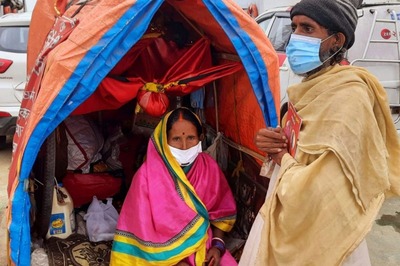
views
After 40 days of taking off on July 14, India’s Chandrayaan-3 mission on Wednesday (August 24) witnessed the successful soft-landing on the moon’s south pole at 6.04 pm. As India has scripted history, here’s a look at listed companies behind India’s journey to the moon and their 3-year return. The moon mission, spearheaded by ISRO, was also helped by these companies.
The companies that contributed to the Chandrayaan-3 mission are Larsen & Toubro (L&T), which has given over 170 per cent returns in 3 years; Hindustan Aeronautics Ltd (HAL), which has given about 200 per cent return in 3 years; BHEL, which has grown 172 per cent during the period; Mishra Dhatu Nigam Ltd, which has jumped 83 per cent; and Walchandnagar Industries, which is up 66 per cent in three years.
Other companies include Centum Electronics (up around 300 per cent in 3 years), chemicals company Linde India (over 1,000 higher in 3 years), Paras Defence & Space Technologies (around 2 per cent up in 3 years), MTAR Technologies (up 41.2 per cent). Apart from these, Godrej Aerospace, which is part of Godrej Industries, also contributed to the mission. Godrej Industries is about 15 per cent up in the past three years.
L&T’s contribution includes providing critical booster segments, namely head end segment, middle segment and nozzle bucket flange, with a diameter of 3.2 meter were manufactured and proof pressure tested at L&T’s Facility in Powai. It also supplied ground and flight umbilical plates, which were manufactured from its hi-tech aerospace manufacturing facility at Coimbatore.
BHEL provided batteries for Chandrayaan-3 mission. Its Welding Research Institute (WRI) played a role in the supply of bi-metallic adaptors for the mission. According to media reports, components supplied by WRI were parts of cryogenic stage of LVM-3M4 flight Chandrayaan-3.
Mishra Dhatu Nigam developed and supplied critical materials such as cobalt base alloys, nickel base alloys, titanium alloys, and special steels for various components of the LVM3/M4, a three-stage heavy lift launch vehicle used in the lunar mission.
HAL provided several components that supported India’s Chandrayaan-3 mission. Last year, a HAL-L&T consortium bagged an Rs 860-crore deal from New Space India Ltd (NSIL) to build 5 polar satellite launch vehicle (PSLV) rockets.
Walchandnagar Industries manufactured and proof pressure-tested critical booster segments S200 in its facility, according to a Hindustan Times report quoting the company’s CEO and MD Chirag Dosh. The company also supplied other LVM3-M4s subsystems like Flex nozzle control tankages and S200 Flex nozzle.
MTAR Technologies also made key parts for the mission at its facility at Balanagar, Hyderabad.
Chandrayaan-3’s Total Cost
The total cost of the Chandrayaan-3 mission was Rs 615 crore, including launch vehicle (Rs 365 crore) and lander & rover development (Rs 250 crore).
Chandrayaan-1 (2008) and Chandrayaan-2 (2019) cost Rs 365 crore and Rs 978 crore.
ISRO’s Upcoming Projects
Aditya-L1-2023: It is India’s first solar mission to study the sun. It will cost Rs 378 crore.
NASA-ISROSAR (NISAR) Satellite – 2024: It is low-earth orbit observatory for understanding changes in Earth’s ecosystems. It will cost Rs 12,296 crore.
SPADEX- 2024: Space Docking Experiment is ISRO’s twin spacecraft mission to to mature technologies related to orbital rendezvous, docking, formation flying, with scope of applications in human spaceflight, in-space satellite servicing and other proximity operations. It will cost Rs 124 crore.
Mangalyaan-2 – 2024: It is a mars orbiter mission, which is India’s second interplanetary mission in human spaceflight. Its cost is not disclosed yet.
Gaganyaan- 2024: It is India’s first human space mission. It includes launching crew of 3 members to an orbit of 400 km for 3 days. It will cost Rs 9,023 crore.
Shukrayaan 1 – 2031: It is ISRO’s Venus mission. It will cost Rs 500-Rs 1,000 crore.



















Comments
0 comment